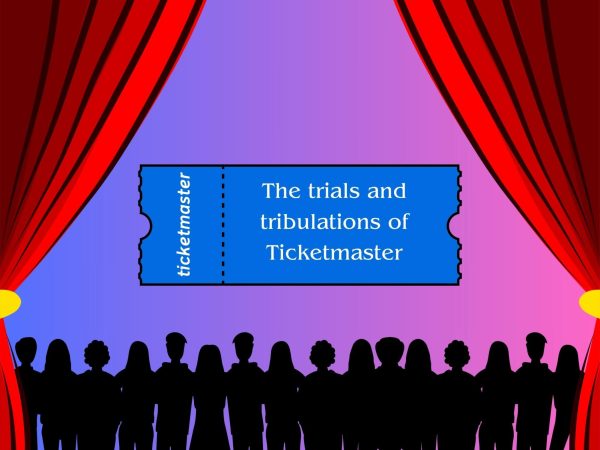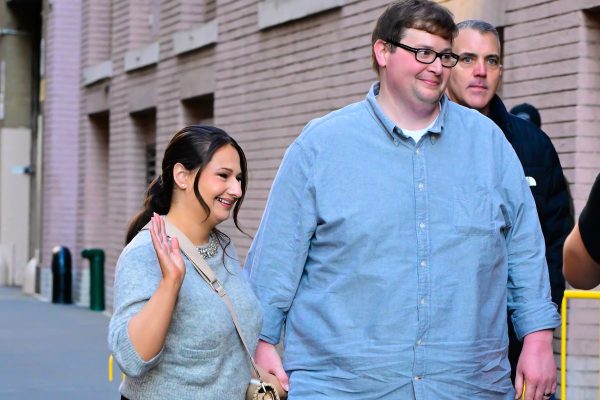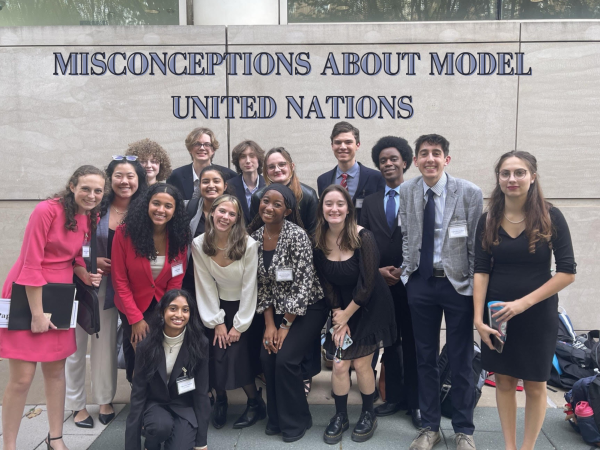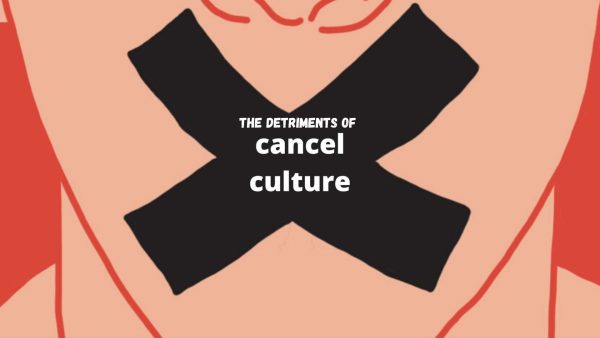Make centrism cool again
October 19, 2017
In 2012, they constituted a staggering 40% of registered voters in the United States, outnumbering the entire combined base of both major political parties. They live nearly everywhere, from San Francisco to the suburbs to Townville, Pennsylvania. If they unified into a single political party, it would almost certainly beat the Democrats and Republicans to nearly every seat in Congress. When Richard Nixon spoke of the “silent majority,” he referred to cultural conservatives with then-minimal representation in public discourse, but the coinage may as well serve to describe this massive group. Political independents, those dissatisfied with the extremism of the radical left and right and with the constant gridlock and infighting apparently intrinsic to American politics, form the new majority of the American electorate, and statesmen and pundits alike would do well to pay them attention.
After World War II and the rise of fascism and communism, leaders such as Presidents Harry S. Truman and Dwight D. Eisenhower sought to articulate a political philosophy that would avoid the deadly Scylla and Charybdis of right-wing and left-wing tyranny. This policy combined support for free-market capitalism with modest restrictions where beneficial. It coupled skepticism of militarism for militarism’s sake with an acknowledgment of the responsibilities accompanying status as a global superpower. The postwar consensus, marked by a commitment to intelligent reform tempered with a spirit of caution and moderation, defined the broad center of American politics from the 1940s to the present. Most assumed that partisan conflict would nonetheless take on a centrist face, with moderate conservatives and moderate progressives competing for the vote of the general populace, which hovered near the middle with mild occasional oscillations. Both Republicans and Democrats would experience brief outbursts of partisan fervor along the lines of McGovern and Dukakis on the left and Goldwater and Reagan on the right. Even when these more combative politicians achieved electoral success, however, as Reagan did, they would step back from the most extreme parts of their agenda, and future leaders would eventually abandon or replace what immoderate measures did make it into law.
Underneath the veneer of consensus, however, resentment began to fester, with presidents such as George W. Bush and Barack Obama becoming increasingly polarizing figures, and in 2016, the storm broke loose. Bernie Sanders, a Vermont Senator with no formal party affiliation and proudly identified as a socialist, lost the Democratic primaries in a narrow second to former New York Senator and Secretary of State Hillary Clinton, and his loss came only with the entire party establishment firmly supporting Clinton’s campaign. Meanwhile, Donald Trump, a New York businessman and reality television host who had spent much of his political life as a Democrat, won the Republican primary largely through his combative stances on polarizing social issues — particularly immigration — on which most other Republicans sought a more moderate, conciliatory tone. Trump went on to defeat Clinton in an upset victory, casting his opponent as an embodiment of the American political establishment — what might seem a decisive rejection of centrism on the part of the American people.
The Democrats now seem determined to return the favor. Influential Rolling Stone journalist Matt Taibbi attacked the very notion of centrism as apparently embodied by Clinton and even Barack Obama, describing it as a false invention of corporate right-wingers; as a model for the future of American progressivism, Taibbi holds up British Labour Party leader Jeremy Corbyn, a polarizing economic hardliner long derided as a fringe figure by the right and center-left alike. The Democrats, Taibbi and his cohorts argue, lost the 2016 election not because of dissatisfaction with the Democrats themselves, but because of dissatisfaction with the postwar consensus, of which Clinton stood as the primary representative.
The fundamental flaws in this narrative quickly make themselves evident. Clinton may seem a moderate on economics, but even prior to the leftward lurch prompted by the insurgency of Bernie Sanders, she accumulated a Senate record fiscally progressive enough to make Barack Obama look like a right-winger. This does not even take into account Clinton’s much-discussed disconnect with the social values of working-class conservative Democrats; Clinton over ever really diverges from Democratic party orthodoxy with her hawkish foreign policy — never a winner with many voters, right or left, after Iraq. Hillary Clinton may represent the rough center of the modern Democratic Party, but her views lie far left of the average American’s. In other words, the much-talked-about rightward jolt of the Republicans in the wake of the Tea Party movement only serves to obscure the simultaneous, but much less visible, shift of the Democrats towards the far left — a shift that cost the party dearly with would-be supporters.
In nearly every election, voters now receive the choice between an extremist Republican and an extremist Democrat, and the country pays the price. Despite widespread agreement that the Affordable Care Act needs improvement and revision, so far no truly bipartisan proposal answers this problem — because Republican partisans insist on full repeal and replacement, while Democratic partisans refuse to consider anything short of British-style socialized medicine. The Heidi Heitkamps and John McCains of the world, despite standing among the few people who can actually get something passed in Washington, routinely face the ire of the party media machines, from Breitbart to Buzzfeed. Meanwhile, leading political figures become entangled in a largely fruitless culture war over NFL players’ views on the national anthem — because virtue-signalling to the base now holds more importance in politicians’ minds than passing meaningful legislation for their constituents.
America can return to the politics of consensus and moderation, of thoughtful and reasoned debate, of friendly cooperation between statesmen of vastly different political orientations and backgrounds to achieve something of worth for the American people. It requires courage, however, to stand up to the petty politics of the partisan machines, and such courage often requires the encouragement of those who hold the greatest influence over a country’s political future: the voters. To bring about a return to the center, Americans could promote the following initiatives and more:
- Offer greater visibility and support to third-party and independent candidates when major-party candidates appear too extreme or inefficient. Not only will this provide a greater platform to countless worthy contenders, but it will encourage major parties to avoid pushing their agendas to the point of unelectability.
- Regularly write letters to members of Congress regarding specific issues regarding which they feel strongly; this will help those in office to gain a stronger sense of their constituencies’ views and needs.
- Support an “open primary” system, in which citizens can vote in the primary elections of any party, regardless of the voter’s own party affiliation — thereby preventing extremists from winning primaries by aggressively appealing to the base. In a more radical vein, some might wish to pursue a California-type “jungle primary,” which eliminates partisan primaries altogether; instead, candidates of all parties compete in one combined primary, with the two candidates who receive the most votes, no matter their party, proceeding to the general election.
By opposing extremism wherever and however it appears, by supporting a reasoned, healthy, and respectful civil discourse, and by working to promote politicians and policies that look beyond partisan interests to seek broad consensus and the common good, Americans can overcome the current plagues of polarization, intemperance, anger, and tyranny present in the government. Extremists often claim that they can, by political action alone, achieve Utopia, by a stroke of the pen restore Eden to Earth; by and large centrism holds no such illusions. But the spirit of civility, moderation, and cooperation, the dogged dedication of hardworking Americans to overcome their differences and do something meaningful for their fellow man, holds the greatest and most tangible promise for a freer, safer, and more prosperous society. Then can the great American experiment hold certainty in its continuation; then can that scarce thing, faith in the future, begin to achieve something of a restoration; then can the ship of state, for too long caught between the beasts, sail on past Scylla and Charybdis and move slowly but inexorably forward; then can this nation proceed, as Abraham Lincoln declared in his second inaugural address, “with malice toward none, with charity for all…to do all which may achieve a just and lasting peace among ourselves and with all nations.”


















